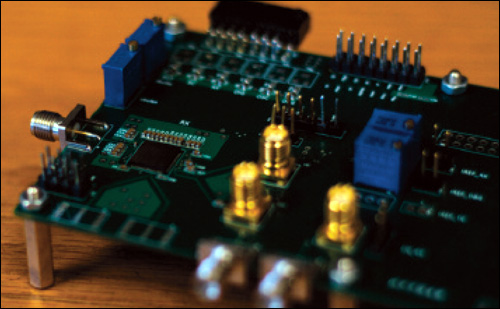We’ve all heard the warning: Overexposure to the sun’s ultraviolet (UV) rays can cause skin cancer. Gernot Schmid, an engineer at Seibersdorf Laboratories, an Austrian provider of laboratory and analysis services as well as solution-driven research and development, and his team have developed a concept for a convenient, low-cost way to alert users when it’s time to get out of the sun: a “smart UV sensor” and an application that runs on a mobile phone equipped with Near-Field Communication (NFC) technology.
“In general, a precise UV assessment requires sophisticated and expensive measurement equipment, because skin sensitivity is highly dependent on the wavelength composition of the radiation, mainly on the proportion of UV-A to UV-B,” Schmid explains. “That proportion depends on several factors, such as sun elevation, clouds, ozone layer conditions and reflectivity of the environment.”
Scientists have developed computational prediction models of the UV spectrum for every place on Earth under standardized conditions. Based on the data from these models—coupled with the actual date, time and location—it is possible, Schmid says, to estimate the UV exposure of an individual using sensors and filters that mimic wavelength-dependent skin sensitivity.
Available personal UV monitors are costly and require batteries. “The majority of functions and components required for standalone UV measurement devices—analog front end for measurement signal processing, microcontroller, memory, GPS module, real-time clock and user interface—are already integrated in smartphones,” Schmid says. “So, we asked ourselves, ‘Why not use a smartphone for the UV assessment?’ All we need is a smart UV sensor and a way to transmit data to the phone, where it can be processed and displayed.”
Schmid and his team developed a concept for a UV sensor, or photodiode, and a smartphone application. It would use NFC to transmit raw measurement data from the smart UV sensor to the smartphone, because the technology is wireless, intuitive and simple (just tap, no pairing required). NFC also could wirelessly supply sufficient energy to power the smart UV sensor, which would help keep the cost of the device down.
The smart UV sensor would have to be positioned with the photodiode facing the sun. When the device was brought close to the smartphone, the application would launch automatically and display the maximum time the user could stay in the sun without risking sunburn. Each user could enter a personal profile, including skin sensitivity and the sun protection factor of his or her sunscreen.
The key challenge in commercializing the concept is the development of a small, low-cost UV sensor and matching filtering system that mimics skin sensitivity accurately. “Currently, there are no sensors available fitting both requirements,” Schmid says. “Once this issue is solved, further development is pretty straightforward,” he adds. That’s good news for anyone who doesn’t want to worry about skin damage while soaking up the sun.


